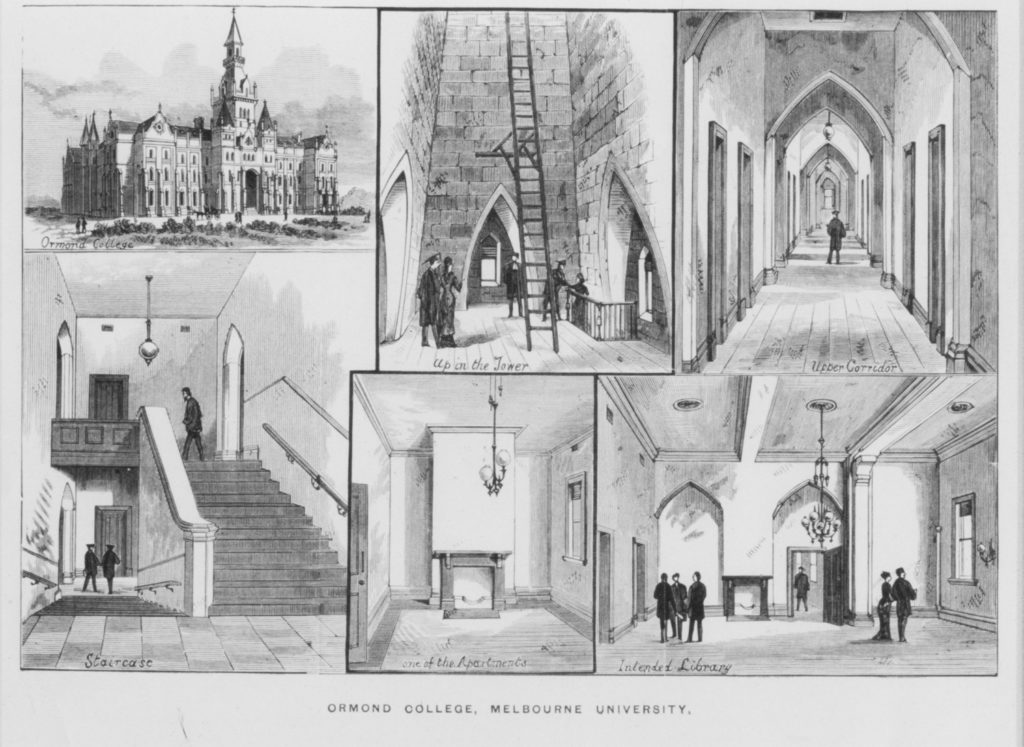Ormond College occupies 10 acres of land on the northern end of the University of Melbourne’s Parkville campus. The College was established after the University of Melbourne allocated parcels of land to a range of Christian denominations; the Presbyterian section became Ormond College and opened in 1881.
A generous benefactor
The building of the College was enabled by generous donations from Francis Ormond, a Western District farmer and landowner. Francis Ormond believed in the transformative power of education and wanted the College founded in his name to be more than simply a place to live: it should equip its graduates with both the potential and the sense of responsibility to make the world a better place.
Largely self-educated, Francis Ormond was committed to helping people from all walks of life access education: he provided schools and literacy classes for his staff and their children and helped establish RMIT (originally the Working Men’s College) and the Gordon Institute.
A remarkable ethos
The College was founded on the progressive ideas of the Scottish Enlightenment. Its founders believed that education made for better people: individuals who could make good moral decisions and citizens who would contribute productively to their community.
Part of this ethos was opening the College to students of ‘all faiths and none’, which saw students of all creeds welcomed as part of the Ormond community. Also part of this ethos was the decision to almost immediately open the College to women students, who competed successfully for scholarships, attended tutorials and were involved in Ormond’s scholastic life. Ormond later became fully co-educational when women were admitted as co-residents in 1973.
Expansion and change
In the post-war years Ormond experienced huge demand for places. In response, the College added a series of new buildings beside its magnificent, heritage-listed Main Building. The new accommodation was designed by the iconic Melbourne architectural firm Grounds Romberg and Boyd, and was noted for its distinctive and ground-breaking design. When the fourth new building, McCaughey Court, was opened in 1968, Ormond’s resident student population grew to over 250 students for the first time. The College also added a new Master’s Lodge and Library during this period.
Growth and development
In recent years the Ormond community has expanded to include a thriving graduate community of nearly 100 students, housed in two custom-built buildings.
In 2015 Ormond founded the Wade Institute of Entrepreneurship which was established with a gift from entrepreneur Peter Wade. The Institute creates and empowers the next generation of audacious entrepreneurs and delivers The University of Melbourne’s Master of Entrepreneurship.
Ormond graduates have gone on to make significant contributions to Australia. They are well represented in State and Federal Parliaments, are leaders in academia, business, agriculture, military, law, sport, education and many other areas of public life.
Ormond College is committed to providing an outstanding residential and learning experience for members of the University of Melbourne through its core values of community, learning, integrity, diversity, heritage and respect.
Commitment to reconciliation
At Ormond, we are a community that values Aboriginal and Torres Strait Islander cultures as fundamental to Australia’s identity, and we are deeply committed to reconciliation. In 2008, we laid the foundation stone for this vision through the inception of the Ormond College Indigenous Program (OCIP). In 2024, we launched our fourth Reconciliation Action Plan (RAP), with a focus on truth telling, amplifying Indigenous voices and spearheading leadership on Indigenous matters.
Ormond College acknowledges the uncomfortable history surrounding its benefactors, including Francis Ormond and John Wyselaskie, and the broader context of colonisation in which the College was established. In acknowledging the achievements, generosity, and legacy of our benefactors, we also acknowledge at whose expense this benevolence was derived – specifically, the Wadawurrung and Djab wurrung Traditional Owners.

